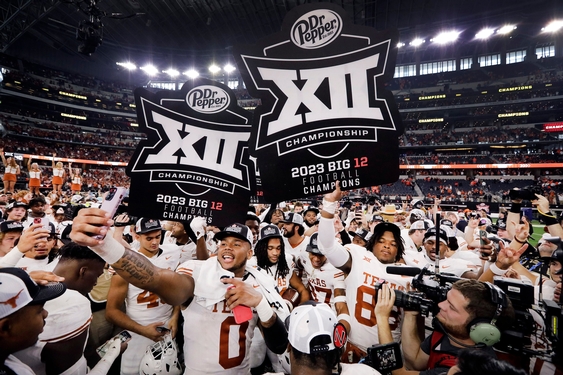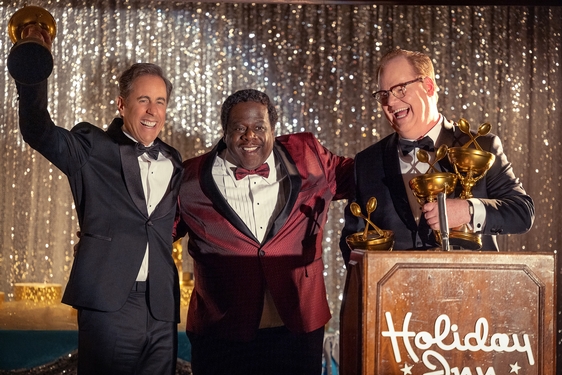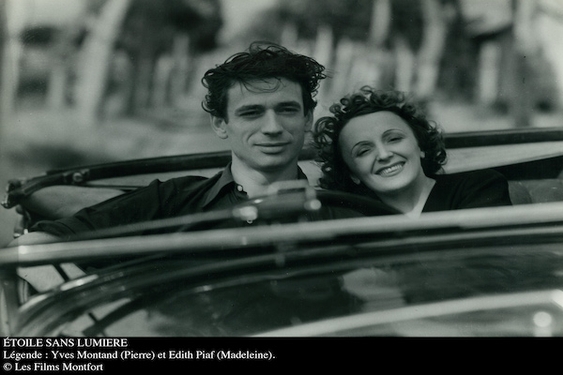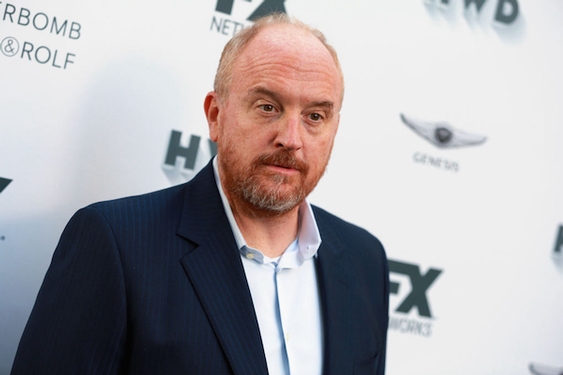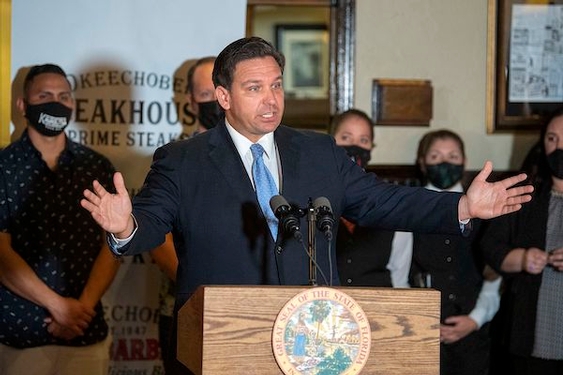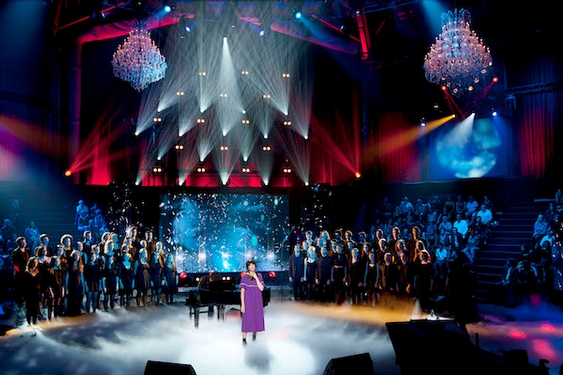The holiday season marks the beginning of a steady stream of college football bowl matchups and playoff-deciding professional games filling the airwaves.
But if you’re a DirecTV customer, you’re instead caught in the middle of a battle between TV titans duking it out over what they – and ultimately, you – should pay for the privilege of fulfilling your sports fix.
It started Dec. 1 when Tegna pulled its signal from the satellite cable provider, just as the Texas Longhorns and SMU Mustangs were preparing to play for their first conference championships in years.
In Dallas-Fort Worth, that meant ABC affiliate WFAA went off the air. The standoff between the two companies is now entering its third week with no end in sight.
Tegna declined multiple interview requests from The Dallas Morning News. However, the company said in a statement that it hopes to reach a deal with DirecTV so football fans won’t miss out on the closing weeks of the NFL season or college football’s bowl season.
According to DirecTV, Dallas customers may not be able to watch the upcoming Birmingham Bowl, Armed Forces Bowl and Las Vegas Bowl. However, those games will also be available on ESPN. Even further south, thousands of Houston and San Antonio homes may not have access to some Houston Texans NFL games.
“We’ve seen blackouts for as long as cable television has been around,” said Dan Goman, CEO of media supply chain company Ateliere Creative Technologies. “But to the extent we’re seeing them now, I think people are right to worry about it. Because it will happen even more. I think cable is literally not a viable business anymore. They’re still operating, but it’s sort of like they’re already dead and I think some cable operators know that.”
According to DirecTV, retransmission fees have soared 270% since 2017. It’s a rate increase from $5.85 in 2015 to $19.85 this year. The company said that at this rate, those fees could rise 47% by 2027, resulting in a cost of $29.25 for television providers.
How do blackouts happen?
FCC regulations require cable systems to get consent from a TV station to carry its broadcast signal. Cable providers, like DirecTV, have to pay stations a retransmission fee for this right. Contracts usually last a few years, but when it comes time to negotiate, both parties have to discuss fees, guidelines and more before the contract can be renewed.
If both sides can’t agree, then customers are out of luck, said Patricia Ramsey, media supervisor at Ocean Media, a company that plans and manages media advertising buys.
When a blackout happens, it’s not just football games that are affected. Viewers lose access to news stations like WFAA as well.
Those channels also can differ by market, Ramsey said. In Tegna’s case, it owns 64 local news brands in 51 markets across the U.S., including affiliates of all four major networks.
How did we get here?
Since the start of 2020, there have been 83 television blackouts across the country, some of which have gone unresolved for months and even years.
There are currently six separate blackouts from Tegna, Cox Media Group, Mission Broadcasting, Nexstar and White Knight Broadcasting, affecting DirecTV and DISH customers. The blackouts mean millions across the country may not have access to news stations or their favorite sports teams.
It’s a problem that’s been exacerbated by people moving away from cable television due to high prices and toward streaming platforms like AppleTV or Disney+, said Raji Srinivasan, a marketing professor at the University of Texas at Austin.
“So the pie they’ve been sharing is getting smaller,” she said. “It’s the opposite of a rising tide lifting all boats. It’s a vicious cycle that’s turned into a tug of war.”
Since 2015, the number of paid TV subscribers has gone down 38% from 100 million to 74 million, according to DirecTV. The company said it expects to only have 62 million subscribers by 2027.
“The growth of streaming media is making the situation even worse. In the past, the networks and their affiliates were the ‘must-have’ channels for cable and satellite providers,” said Mark Brown, chief investment officer at Rain The Growth Agency. “Now, almost all of that programming is available to consumers directly through streaming services, and consumers are cutting the cord in record numbers.”
With dwindling viewership and paying customers, station owners like Tegna, Nexstar and others are having to find loopholes to keep profits up, said Michael Hartman, DirecTV’s chief external affairs officer.
Station owners like Nexstar and Sinclair have used “sidecars,” a business model that allows a powerful broadcaster to exert “operational and financial influence” over a smaller and independent broadcaster, according to the FCC. It means that oftentimes smaller broadcasters are forced to pay more due to a lack of negotiating power.
“Those kinds of loopholes have allowed them to get bigger and expand their leverage,” Hartman said. “With leverage, it’s contributed to driving up the retransmission costs.”
For DirecTV, it’s caused the company to question if Tegna has a long-term future in broadcast media, Hartman said.
“What’s their (Tegna’s) plan after there’s no pay TV? Because if they’re just trying to milk all the money they can despite subscribers leaving, then what’s going to happen?” he said. “I don’t think these guys can live anymore just off terrestrial transmission. They don’t have a business.”
The future is already around the corner for some broadcasters as companies like Phoenix-Ariz.-based CableOne were actively helping its customers move away from its own video service ahead of shutting down its television services.
What does the future hold?
As broadcast media struggles to hang onto the last of its loyal viewers, television providers are trying to turn to new ideas to bring people back.
DirecTV has proposed an a la carte model where customers can subscribe to specific channels instead of bundles. However, Tegna has turned that proposal down since late November.
“DirecTV’s proposal to instead require its customers to pay yet another standalone fee for our local stations – unlike all other broadcast stations – disserves subscribers and is not productive,” according to Tegna.
With station owners standing firm and television providers unable to make any progress in negotiations, it leaves the future of Tegna and DirecTV’s relationship uncertain, as well as that of others in the industry.
“They (station owners) are generally slow to understand what is happening. Now that they need the money, they’re using the full force of what they can do to make these cable operators pay them more,” Goman said. “It’s not really the way to operate because ultimately they have to figure out a solution.”
If broadcast media and station owners don’t eventually find a way to coexist in an evolving market, the effects won’t be limited to television and its viewers, Rain’s Brown said.
“What’s particularly concerning about this scenario is the access to local news coverage that the stations provide. If these media outlets lose their audience, they lose their advertising revenue, and that ad revenue is what pays for their newsrooms,” he said. “If local media does not remain profitable, there isn’t a clear alternative available to replace their role as the fourth estate.”
According to Hartman and DirecTV representatives, the company and Tegna have not made significant progress since the blackout started.
“Broadcasters have their hands over their ears, acting like reality’s not happening around them, and all they want to do is make more on fewer subscribers,” Hartman said. “If we don’t evolve our model, to meet the consumers where they are, we’re not going to have any consumers.”
_____
©2023 The Dallas Morning News. Distributed by Tribune Content Agency, LLC.


